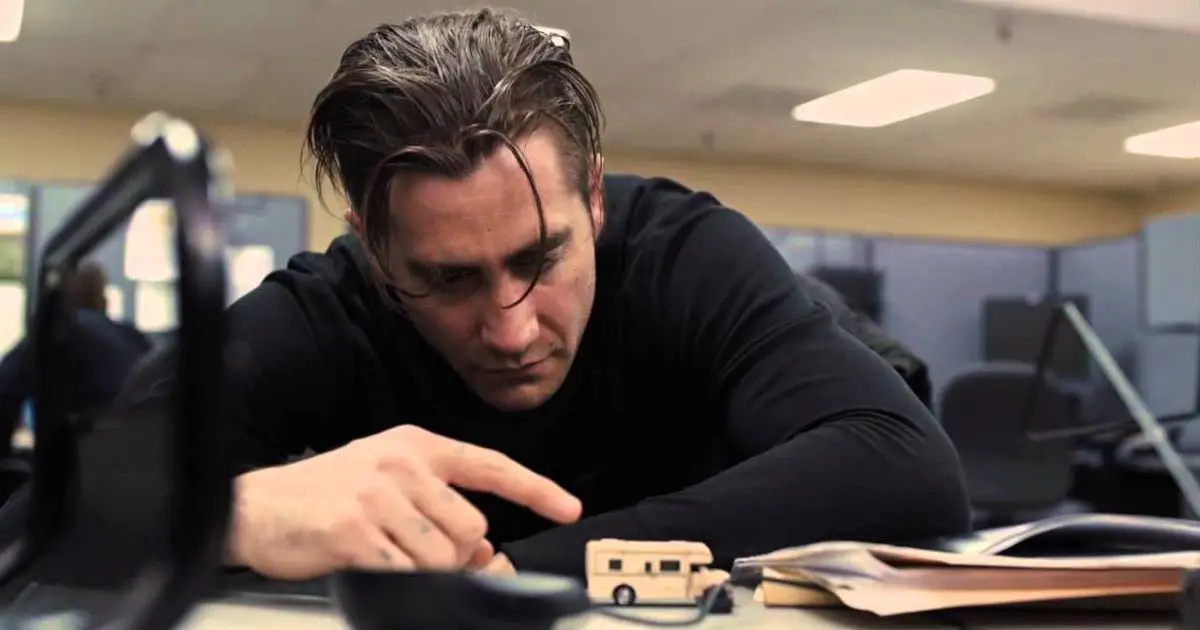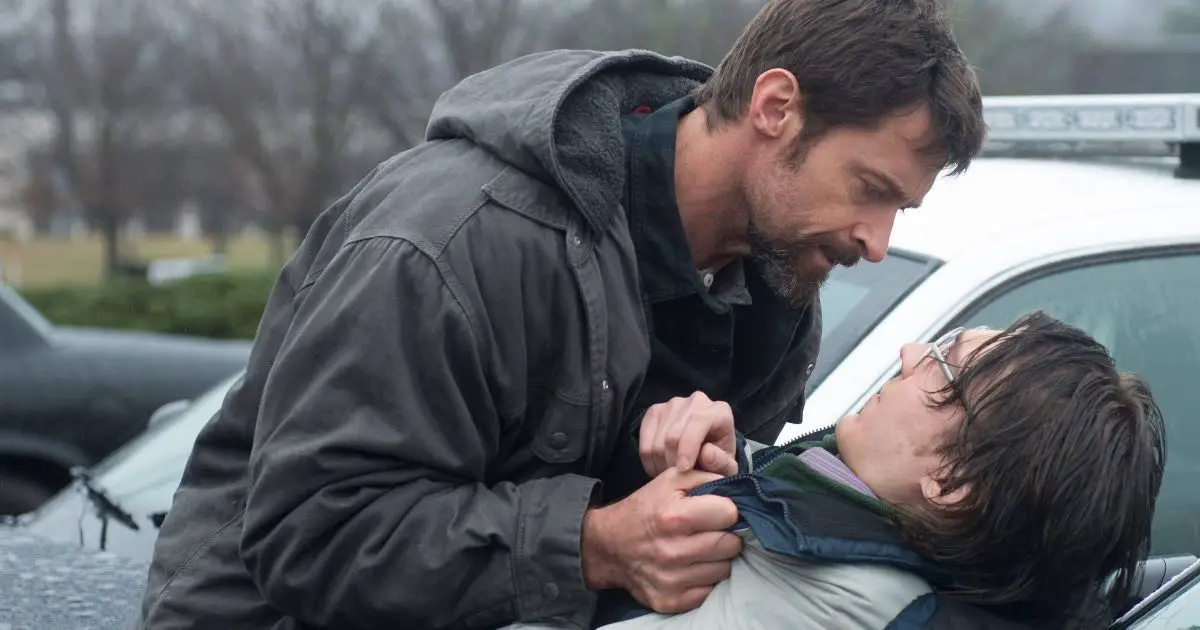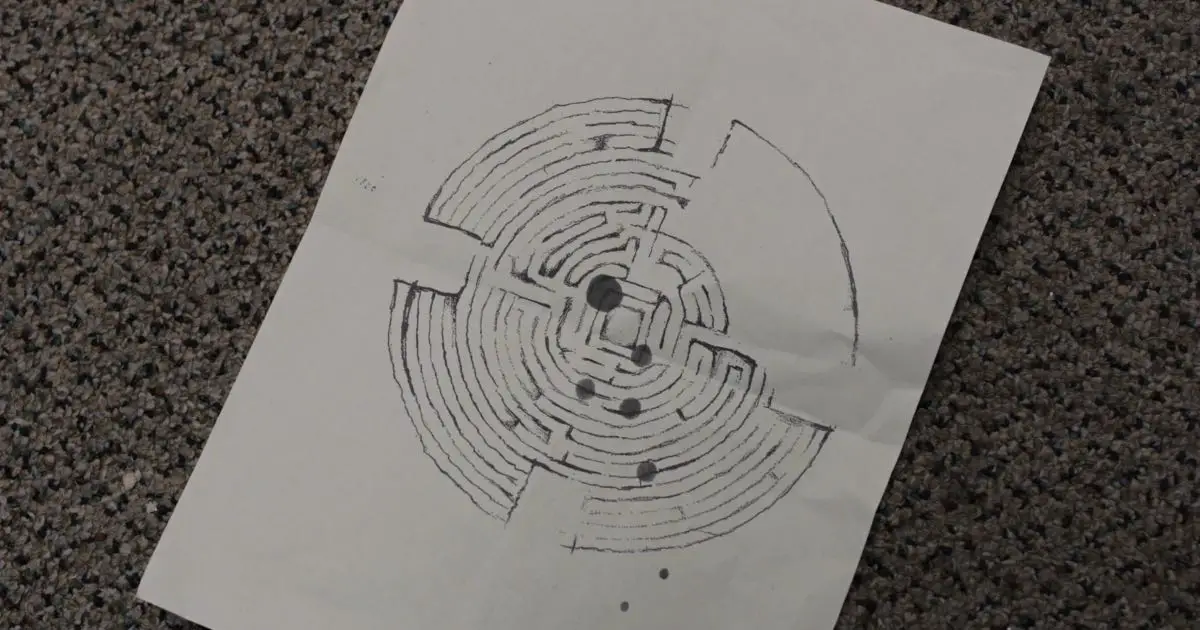Directed by Denis Villeneuve and written by Aaron Guzikowski, Prisoners is a complex rumination on morality, trauma, guilt, faith, religion, and psychology, in the garb of the conventional detective story or suspense thriller. Throughout the film, the viewer is shoved into the shoes of the characters — all the clues are hiding in plain sight, waiting for us to notice.
The innovative narrative style of Prisoners can make the film difficult to decode on the first watch. It deliberately leaves us scope to miss crucial details. And even when you put all the details in place, the subtext or underlying themes and the symbolic import of the film is a complex maze left for us to work through. This article attempts to solve the maze which is the movie itself and explain its most important aspects.
Disentangling the Plot
The central plot revolves around the kidnapping of two little girls, Anna Dover and Joy Birch. The police force, led by Detective Loki (Jake Gyllenhaal), tries to track down and rescue them. There are suspects, puzzling clues, distraught parents going rogue out of desperation, twists, and apparent dead ends. It all seems quite familiar when taken at face value. And this is where the film tricks us.
Some narratives advertise their lack of adherence to traditional manners of storytelling right from the beginning. Cases in point: Nolan’s Inception, Aronofsky’s The Fountain, nearly all movies which play with timelines and chronology of events. Not so in Prisoners. Prisoners is presented through a deceptively simple linear chronology, which initially seems to unfold like a conventional ‘whodunnit’ story. But pieces of the story’s exposition are scattered throughout this linear narrative, and this finally leads us to the culprit.
So, let’s break down the vital points of the whole story in a chronological manner and make the plot a little clear.

The story begins in the 1980s when Holly Jones (Melissa Leo) and her husband were an ordinary devout Christian family. When they lose their little boy, they lose faith in a benevolent God. They’re angry at God, believing that He must have caused this tragedy at will. And decide to wage a “war” with God by “making children disappear,” so that others too would “lose their faith” like they did. This is the turning point which leads to the events of the movie.
In August of 1987, the Joneses kidnapped a little boy named Barry who lived in the neighbourhood where the Dovers and the Birches would live later on. The Joneses drugged and tormented Barry, and at some point, suffered an accident involving the Joneses’ pet snakes, all of which left him irrevocably damaged. The Joneses renamed him Alex, and gave him a backstory that he was their nephew, and that they adopted him when his parents died. Meanwhile, the FBI were investigating the case of Barry’s disappearance, and a newspaper article from 1987 mentioned that a serial child abductor may be out there. Time passed, and there was still no trace of Barry. It became a cold case, his mother lost all hope, and she moved away from her old house, leaving it abandoned.
The Joneses then abducted and usually killed several children for years. One of these children was Bob Taylor, who was either allowed to leave after the Joneses had broken him for good, or escaped somehow. He became obsessed with and constantly re-lived his own abduction. After a great deal of investigation finally leading nowhere, an FBI agent wrote a book titled Finding the Invisible Man, where he theorised about a serial abductor in Pennsylvania who is obsessed with mazes.
Five years before the events of the movie, Holly’s husband went to the Father to “confess” his sins. But rather than repent, he bragged about killing 16 children instead. The Father was horrified by this and tied him up and left him to die in his basement. Holly then had to work alone, which made it difficult for her to kidnap children. So, fewer children disappeared for the next few years, and focus was taken off the case.
And at this point, the events of the movie begin. Alex (Paul Dano), who is actually Barry, parks his RV in front of his old house, near the Birch house where the Dovers have come to celebrate Thanksgiving. When Anna and Joy play on the RV, Alex spots them. Later, when the two girls go off alone to find Anna’s whistle, Alex tries to play with them, and then drives them to his house. Presented an open opportunity, Holly kidnaps and imprisons the girls. Alex runs off and drives away, and is later arrested as the suspect.
When Keller kidnaps Alex, Holly brings the girls into the house rather than leaving them underground, because psychopaths need company too. While talking to known sex offenders, Loki goes to the Father’s house and discovers the rotting corpse of Mr. Jones.
Bob Taylor hears about the case, and starts mimicking the kidnapper role by stealing or buying children’s clothes, covering them with pig blood, burying mannequins in his yard, and leaving mazes and snakes all over the place. Unable to handle being questioned later on, he commits suicide in the police station.
When Alex mentions a maze to Keller, he talks to Holly to see if she knows anything. Joy sees or hears Keller at this point, but can’t scream for help because her mouth has been taped shut. Keller sees the news of Taylor’s suicide and leaves.
Anna and Joy attempt to escape, but only Joy is successful. When she tells Keller “You were there,” he realises that she must be talking about Holly’s house. He rushes there, and Loki rushes after him thinking that Keller is going to his own old family house. Loki ends up finding Alex, and Keller ends up Holly’s prisoner underground. Keller finds Anna’s whistle down there. Loki is told to go and inform Holly about Alex being found. When he gets there, Holly is about to kill Anna, and doesn’t pay attention to Loki’s knocks on her door. Loki moves about her house and sees Mr. Jones’ photograph where he’s wearing the maze pendant which was on the corpse in the Father’s basement. He realises that the Joneses were the child abductors, kills Holly, and rescues Anna. Alex’s identity as Barry is found out and he is reunited with his mother.
Grace and Nancy visit Loki with their daughters. Grace tells Loki that Anna was saying she and Joy had found her whistle, but she must be confused about that, so they got her a new whistle.
The police force is investigating Holly’s house, but has to pause because of the weather. When Loki is about to leave the premises, he hears the vague sound of a whistle being blown. He stands around wondering what to do, and here the movie ends, leaving us to decide whether he rescues Keller or not.
Children of the Damned
The entire movie hinges on Alex not revealing what he knows. Had he told everyone about Holly as soon as he was caught, the mystery would end right there. Keller is sure that Alex is the true culprit, and he ends up going down a very dark path because he refused to consider any other possibility. Ironically, he is both right and wrong. Alex did take the girls right to Holly, and he is the reason for their abduction, and he does know where they are. Yet, he is not the primary culprit, and did not hurt the girls physically at least.

Why Alex doesn’t talk even under extreme torture may be a mystery to some. But, the movie makes the strange situation all too believable. He has been a victim of horrific abuse, which has left him mentally damaged and with the IQ of a child. He seems to suffer from extreme cognitive dissonance and can barely communicate anything. Even when he gets to his breaking point and wants to tell Keller where the girls are, he can only manage a pathetic “They’re in the maze.” His mind doesn’t register anything outside of the maze he is mentally trapped in.
He’s physically capable of breaking free from his abuser, and yet, keeps living with her. He clearly remembers something of his old life and true identity. He parks the RV in front of his old house. He sobs out to Keller, “I’m not Alex.” Then he adds “I waited for him … he never came.” The “he” could possibly be the actual Alex, who was perhaps the Joneses’ son. It could indicate that the Joneses kidnapped Barry by telling him that their son wanted to play with him.
And then there’s the other side of the coin. It is well-known that the victims of abuse often become abusers themselves. Alex is not just an innocent victim anymore when we see him. He’s impulsively violent. He chokes the dog for no apparent reason. He also hurts people in a cold and calculated manner when he is capable of it. When the police hand him over to Holly, he whispers to Keller, “They didn’t cry until I left them.” He seems to understand exactly what he is doing there. Taking the girls to Holly, knowing what she was, may have been either an impulsive or a calculated decision, but he certainly understood what he was doing.
The extent of damage that has been done to Alex is mirrored in the character of Bob Taylor (David Dastmalchian). While Alex’s trauma has turned him almost into a vegetative being, Bob’s brain has been hardwired to relive his nightmarish experience over and over. He starts role-playing as an abductor when he hears about the case. He is constantly on the move, but he too, cannot communicate. For three hours in the interrogation room, he keeps drawing mazes to explain where the girls are. Like Alex, the maze is as far as his explanation can go.
At the end of the film, when Joy and Anna visit Loki, they are clearly not the children they used to be. Joy is sombre, and Anna seems to be no more than a shell of a person. Less than a week of Holly’s abuse did that to them. Bob perhaps endured it for years, and Alex still lives with Holly. The way they function, or rather malfunction, is all too plausible. Although Anna and Joy got out in a few days, we are left with a feeling that the damage may never be reversed, and they may continue inflicting the cycle of misery upon others.
The Ending
There are two possible endings: either Loki finds and rescues Keller, or he doesn’t and Keller dies underground.
There are two possible reasons behind this ending. Let’s explore the first one — the film is testing us to see if we have followed the clues. This last maze is one for us to solve on our own.
Throughout the film, subtle little clues are given which don’t seem to be connected initially, but of course, they are. The narrative is not only testing the characters, it is also testing the viewers. Here are our clues to predict whether Loki will find Keller:
- It is established early on that Loki has never lost a case that has been assigned to him thus far. His reputation is still intact at the end of the film.
- Loki knew by the end that Bob Taylor was imitating his kidnappers. Remember, he was burying mannequins in his yard — replicating the underground prison in the Joneses’ yard. The mazes and the clothes he took were explained away, but what he was trying to do by burying the mannequins is still unknown to Loki, which must be bothering him.

- Grace tells Loki that Anna claimed to have found her whistle, but she must have been mistaken because it is nowhere to be found now. The fact that it is the sound of the whistle that catches Loki’s attention means that he must make the connection somehow. There was no reason to inform Loki about the whistle. It has obviously been included in the narrative as a clue for him to find Keller later on.
- The discovery was foreshadowed in the Father’s house when Loki notices a mark on the floor. He dismisses it at first, but then investigates and finds the corpse. Similarly, he dismisses the sound of the whistle at first, but then he stops to think about it.
Such clues given in the narrative seem to indicate that Loki will be able to find Keller. But then there’s the other possible reason behind the open ending — it doesn’t matter whether Keller is found. If he’s not, he will die a prisoner. If he is, he will live a prisoner — he will be put behind bars for kidnapping and torturing Alex. Either way, he will remain physically imprisoned, and perhaps mentally and spiritually too. Thus, a scope for doubt is still left regarding the ending. But it does strongly incline towards a rescue.
Themes and Symbolism
The Title
The title works on multiple levels. At first, it may seem to refer to the abduction of Anna and Joy. And then Keller kidnaps Alex and holds him as a prisoner. Slowly multiple kidnappings are referred to, and at the end, Keller is Holly’s prisoner. Also, Loki literally sends people to prison as a job. But the title does not refer merely to a physical prison. The characters are also psychologically and spiritually imprisoned.
As discussed, the abuse victims, prominently seen through Alex and Taylor, are psychologically imprisoned within their trauma. They are never able to move past it; everything they are is dictated by the prison they live in. The Joneses lost their faith after the death of their son, and became spiritually imprisoned. After torturing Alex, Keller is unable to finish his prayer because he is having a spiritual crisis. Everybody is imprisoned by something or the other, and this is directly connected with the motif of the maze.
The Maze
The symbol of the maze is connected with the theme of imprisonment. It is vital to the plot, because it explains a psychological state that cannot be explained with words. The characters are stuck in a maze and cannot get out.
But the maze has another interesting function — it is a commentary on the structure of the film itself. Along with the characters, the viewers are also thrust into a maze. The movie is a narrative maze, and gives us clues about how to watch and understand it. It is up to us to pick up on the clues and solve the maze, or miss the clues and get lost in it.

Religion
The film begins with a prayer, and establishes the religious theme immediately. Many of the characters are devout Christians, one is even named Grace. Christian iconography is splashed all over the movie. The complication comes in with a character named Loki, the “trickster” of Norse mythology, who is also the detective the Christian characters are depending on. The one named after a God who causes trouble is supposed to play the saviour here.
Trees also play an important role. They are silent spectators to all that happens. There’s a family named the Birches. The prominence given to nature may also suggest the presence of pagan Gods.
The entire movie takes place because the Joneses lose faith in their God. The snakes they keep are a reminder of that primordial serpent of Christianity — Satan. They wage a war against God and tempt believers away from their faith, like Satan.
Religious themes are thus presented in multifarious and ambiguous ways.
Faith
Prisoners is an in-depth exploration of faith and spirituality. Throughout the film, turning points come when people either keep faith or lose faith. The Joneses lose their faith and this drives them to extremes. On the other side, Keller goes to an extreme by keeping faith in his instinct that Alex is guilty. The film presents the motto of hoping for the best and preparing for the worst in various ways.
And even the ending boils down to faith — it questions whether we, the viewers, have faith that Loki will find Keller.
To conclude, Prisoners is a complex movie, worth talking about and revisiting. If you missed something the first time, re-watch it with these points in mind. It might just end up feeling like a whole new film.

